'The epitome of what the horror film should be': How 1950s French horror Les Diaboliques inspired Psycho
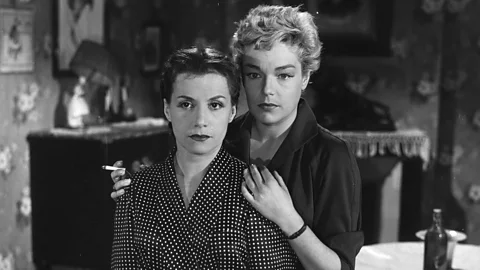 Alamy
AlamySeventy years old this year, Henri-Georges Clouzot's film about two women plotting murder is a masterclass in macabre dread – and inspired Hitchcock's classic among others.
Famous for writing the novel Psycho (1959), the basis for the influential 1960 Alfred Hitchcock film of the same name, author Robert Bloch understood the horror genre more than most. So when you read that he called a film his "favourite horror of all time", as he did in an interview with French magazine L'Ecran Fantastique, you have to take that appraisal seriously. The film referred to by Bloch wasn't the adaptation of his own story, nor a Hollywood classic, but instead a quietly influential French feature, 70 years old this year, that packs as much of a macabre punch as his own morbid masterpiece: Henri-Georges Clouzot's Les Diaboliques (1955).
Adapted from the novel She Who Was No More (1952) by French crime-writing partnership Pierre Boileau and Thomas Narcejac (also known as Boileau-Narcejac), Clouzot's film was a revolution in chilling cinema. It mixed techniques from film noir and horror to great effect, creating a hybrid that was deeply influential with its heart-stopping atmosphere of suspense.
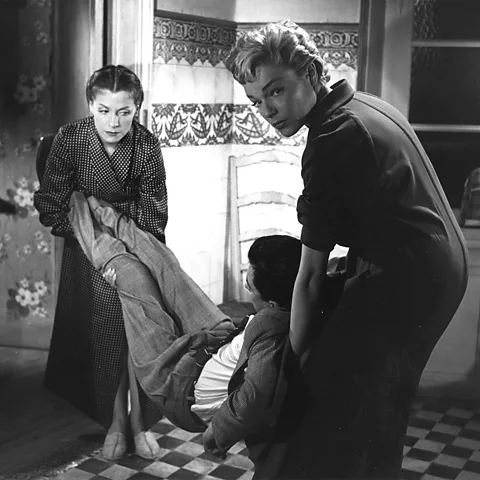 Alamy
AlamyLes Diaboliques concerns the tumultuous relationships of several teachers in a private boarding school situated in outer Paris. The weak heart of Christina – played by Clouzot's own wife Véra – is continually strained by the actions of her abusive husband Michel (Paul Meurisse), the school's headmaster, especially since fellow teacher Nicole (Simone Signoret) became his mistress. However, Michel's volatile behaviour is now hurting both women, so they hatch a plan. Though reluctant, Christina is convinced by Nicole to help murder Michel and make it appear accidental. Luring him to Nicole's out-of-town flat, they drown him in a bath and dump the body in the school's swimming pool, ready to be found as if the result of a drunken accident. However, when the body disappears the following day, the women are terrified as to what has happened. Did Michel survive? Or are his haunted remains wandering the school in search of revenge?
A darker shade of thriller
Clouzot's work was often laced with cynicism and pessimism. As Susan Hayward suggests in her 2005 book exploring the film, "the thriller is the genre we most readily associate with him. But not just any thriller. His take on the genre is dark, relentless, stifling, cruel". Beginning his career as a screenwriter before switching to directing in the 1940s, Clouzot was a divisive figure in France. His work for the Nazi-controlled and funded Continental Films, run by Goebbels-appointed party member Alfred Greven, during the occupation played a role in his being barred from directing for two years following the end of the war. At this time, his drama Le Corbeau (1943), about a small town whose citizens are beset by poison pen letters, was read as anti-French and collaborationist, which was ironic considering that the Vichy Government had previously pulled the film from cinemas because of its own negative reading of it. Clouzot's pessimism made him adept at making enemies.
Surviving this furore, Clouzot went on to make some of France's most celebrated films, often indebted to the work of Hitchcock, but still uniquely Gallic. Unlike Hitchcock, however, the French critics of the period, many of whom would form the Nouvelle Vague – a radical and inventive group of French film-makers, who sought new ways of film-making while exhibiting a deep knowledge of cinema history – had little time for him or his work due to the somewhat traditional nature of his film-making. He seemed to embody what was known as la tradition de qualité, the pre-Nouvelle Vague style of French cinema which prioritised story over formal innovation. As Hayward writes, "the Nouvelle Vague consigned him thus to the purgatorial ranks of the cinema de papa [dad's cinema], and Clouzot was an auteur no more".
In hindsight, though, films such as Quai des Orfèvres (1947), The Wages of Fear (1953), and, of course, Les Diaboliques, were ahead of their time, representing a new pessimistic variety of thriller that became more commonplace from the 1960s onwards, both in France and internationally. Many thrillers up to this point had rigidly defined concepts of good and evil, while certainly never daring to end on an unhappy note. But Clouzot was at the forefront of a breed of thrillers which refused simplistic notions of morality, and resisted the need for happy, comforting endings. They became less about heroes walking off into the sunset and more about who could escape the least scathed from their scenarios.
Robert Bloch didn't limit his praise of Les Diaboliques to mere hyperbole. In L'Ecran Fantastique, he noted the fact "there is very little bloodshed" as a reason for its success. Though possessing a few moments of disturbing violence, Les Diaboliques avoids showing much in the way of blood and guts. What it possesses instead is a grim foreboding that builds to an unforgettable climax.
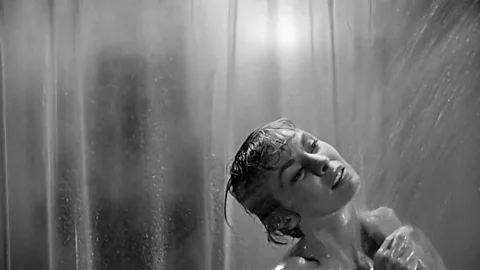 Alamy
AlamyProfessor Claire Gorrara of the University of Cardiff, an academic specialising in French cultural memory, attributes the film's effectiveness to the "incredible atmosphere of rising paranoia and suspense surrounding the main female protagonist [Christina]", she tells BBC Culture. "And [also] the twist at the end, which, in the original film reel, viewers were asked not to reveal outside the cinema to future spectators." While Clouzot certainly had film-making forebears in Hollywood like Jacques Tourneur and Robert Wise, when it came to film-making in Europe, no director had created such levels of tension.
Clouzot works a kind of push-pull psychology throughout Les Diaboliques, teasing a possible solution to the mystery one minute, only to utterly subvert it the next; all the while putting his characters through the emotional mixer and taking the audience along with them. In particular, he inserts supernatural insinuations to keep the characters (and the viewer) on the back foot. A young boy swears that he was punished by the supposedly-now-dead Michel. The suit Michel was murdered in somehow reappears newly pressed from a Parisian drycleaners. And then, most alarmingly, his ghostly face appears at the window in a school photo.
The shocking denouement
It would be remiss not to discuss the film's famous finale and its aforementioned twist. It sees Christina come upon Michel submerged in a bath, only for him to suddenly rise out of it as if waking from the dead, at which point Christina's heart finally gives way – a demise that was bizarrely echoed five years later when Véra herself would die of a heart attack aged just 46, leading Clouzot into a depressive spiral that haunted the rest of his life. As it transpires, Nicole and Michel have been in cahoots all along, the real plot being to eliminate Christina so they can sell off the school and live happily ever after.
Gorrara believes the twist "is so well plotted through cinematographic 'sleight of hand' that I would defy uninitiated viewers to discover it before the ending". Said sleight of hand arises once again from Clouzot's skilful blending of genre – he films the finale exactly as if it was a supernatural ghost story, right until the death of Christina. Even then, the film has one last twist, this time with a real supernatural insinuation, when a boy claims to have seen the now-deceased Christina, just as he had seen Michel earlier when he was supposedly dead.
In an interview with Time magazine, even Stephen King, modern horror's most celebrated author, declared that the finale in the bath was the "single scariest moment I have ever had in entertainment". King is also a great admirer of British horror writer Ramsey Campbell, himself a fan of Les Diaboliques. When asked if he agrees with Bloch's original assessment of Les Diaboliques as the ultimate psychological horror, Campbell tells the BBC: "It may well have been at the time, certainly in terms of commitment to sheer terror of an intensity not previously encountered in the cinema (just as Psycho would up the ante several years later)… and I've seen Les Diaboliques disquiet a recent audience as much as I imagine it did in its day."
In her mixed 1955 review of Les Diaboliques for The Observer, critic CA Lejeune described a trend in cinema of the period that the film exemplified. "Since there seems to be a vogue at the moment for the horrid in entertainment," she opined, "Henri-Georges Clouzot's Les Diaboliques is likely to do well." Undoubtedly this trend was in part down to Hitchcock and his skill in making artful, popular thrillers that increasingly toyed in nastiness, such as Shadow of a Doubt (1943), Rope (1948) and Strangers on a Train (1951). Yet Clouzot's contribution was just as impactful, not simply on the thrillers that came after but also upon Hitchcock himself, with a sense of competitiveness growing between the two in the 1950s. As King suggested in a 2007 interview with the British Film Institute about his favourite films, Clouzot "out-Hitchcocked Hitchcock". Les Diaboliques clearly raised the stakes for Hitch.
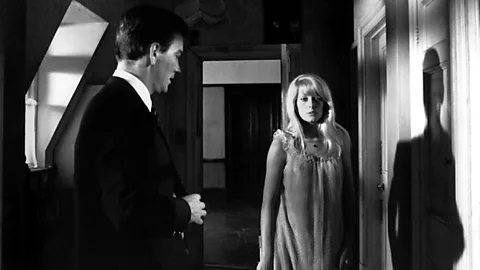 Alamy
AlamyIn fact, Hitchcock himself had wanted to adapt Boileau-Narcejac's original novel. According to Hayward, Véra introduced Clouzot to it, and he secured the screen rights just before Hitchcock. "He… blocked those rights for a year," she wrote, "thus effectively preventing Alfred Hitchcock getting his hands on the story." Cinematic folklore suggests that Clouzot's insomnia meant he was up early enough to secure the rights mere hours before Hitchcock – though there is scant evidence to suggest it was such a close call.
More like this:
• How Monty Python and the Holy Grail changed comedy
Once they were secured, Clouzot would play fast and loose with the original work. In particular, he moved the action to the closed environment of a school, something Gorrara believes is one of Clouzot's improvements. "From my point of view," she says, "the key improvement is setting the film in a boys' boarding school which provides the 'hermetically sealed' community so beloved of the whodunit/ locked-room mystery, but also provides a fascinating socio-cultural context for the trio's passion, corruption and horror."
Clouzot also shifted the relationships around, changing the plot from it being the husband and mistress seemingly ganging up to kill the wife, whose body then disappears, to making the two women the apparent plotters and the husband the ostensible victim. "Making the husband the 'victim' and a sadist to boot allows Clouzot to entice us into complicity with the crime, which may well add to our dread when things go Gothically wrong," suggests Campbell of the change. In the book, the final twist is that the two women are the actual co-conspirators, as they are lovers; in changing the set-up, Clouzot removes the novel's more overt lesbian overtones but retains an implication of intimacy between the women, which seemingly helps to foster Christina's misplaced trust in Nicole.
Its influence, on Hitchcock and beyond
Hitchcock would be quicker off the mark in securing Boileau-Narcejac's third novel, The Living and the Dead (1954), though perhaps the director wouldn't have been so determined if Clouzot hadn't snatched the previous work and made such a fine film from it. The resulting Hitchcock adaptation was Vertigo (1957), regularly considered one of cinema's greatest achievements. While Vertigo feels thematically connected to Les Diaboliques because of their shared authorship, many other films also took aspects from Clouzot's film without having such an overt connection.
France wasn't particularly known for horror in the post-war period, but it's difficult to imagine the country's other great shocker, Georges Franju's Eyes Without a Face (1960), existing without Clouzot's film, if only because French film as a whole still veered away from too much cinematic darkness back then. Indeed, Clouzot opened the door for French cinema's return to horror and all things morbid, while the outbreak of psychologically tense, Gothic thrillers in Western cinema more generally seems spurred on by Les Diaboliques as much as by Hitchcock. It's difficult, without Les Diaboliques, to imagine the cinematic landscape later dominated by psychological thriller/horror hybrids such Jack Clayton's The Innocents (1961), Robert Wise's The Haunting (1963) and Roman Polanski's Repulsion (1965), to name but a few. In Italy especially, its imprint can be felt in the Giallo genre, with films by the likes of Mario Bava and Dario Argento taking the atmospheres and domestic tensions of Clouzot's film and often adding a dose of bloody violence, as well as visuals more obviously cribbed from Psycho.
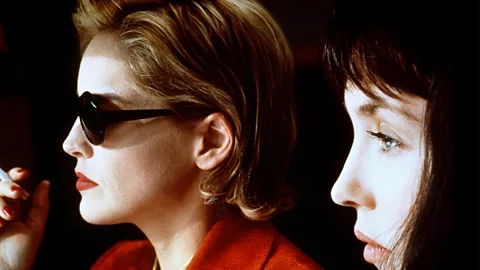 Alamy
AlamyWhich brings us back to Robert Bloch, Les Diaboliques' great fan. Clouzot's film undoubtedly had a profound effect on both the writing of Psycho and Hitchcock's subsequent film, as evidenced by their shared mixture of the psychological and the insinuated supernatural, grim atmospherics, and a quintessential moment of terror unfolding in that most ordinary of spaces, the bathroom. As Campbell notes, despite being beaten to the rights of She Who Was No More, Hitchcock admired Clouzot's version and reportedly "played it to the film crew while making Psycho – very possibly also emulating Clouzot's plea to the audience not to give away the ending". In Hitchcock's case, he wove an anti-spoiler message throughout the film's advertising with one of the taglines being, "If you can't keep a secret, please stay away from people after you see Psycho."
Considering Psycho's vast influence on cinema, Les Diaboliques' macabre DNA has undeniably been spread far and wide. "I think that is the epitome of what the horror film should be," Bloch concluded of Les Diaboliques in the interview in L'Ecran Fantastique. With its wealth of scares, its chilling precision and undeniable lasting impact on Bloch and others, it certainly remains an essential benchmark the horror genre should aspire to.
--
If you liked this story sign up for The Essential List newsletter, a handpicked selection of features, videos and can't-miss news, delivered to your inbox twice a week.
